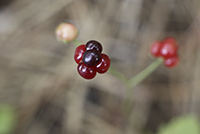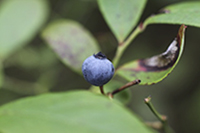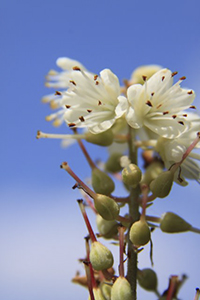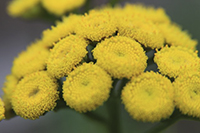
Is It Native? Ask the Expert. Your Plant Photos Identified Here.
Friends of Myles Standish State Forest will help you identify and learn about the plants you photograph in the pine barrens region of southeastern Massachusetts. Below are photos submitted by people who care about the Forest. We invite you to submit jpegs of plants you are curious about to Salicicola.com . We hope you enjoy these photographs and take this opportunity to learn more about our wonderful pine barrens plants.
Note: Irina Kadis, co-founder of salicicola.com, responds to queries placed on this forum. When comments contain links to Salicicola.com, you will see the date and place the photo was taken along with some comments. Two little arrows at the top will lead you to other photos of the same plant taken at different seasons, so you can have a better idea.
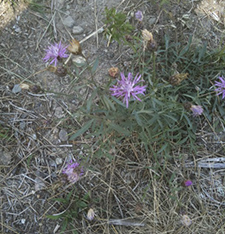
What is it?
I found just 3 invasive Spotted Knapweed plants there right at Three Cornered Pond as you enter the parking lot at the fire Tower, it's right there at the entrance. And it's been cut off on the other side of Bare Hill Road but there are still some intact flowers.
Peter M.
Answer: Peter is correct. Knapweed is becoming a problem in Myles Standish State Forest.
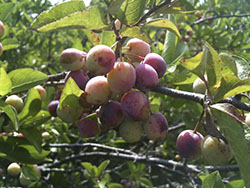
What is it?
Beach plum on Kamesit Rd this morning!
Peter M.
Answer:
Beach plum it is. Wow, that would be a new addition to the MSSF checklist. I have never found it in the Forest! This will bring our total to 334 species.
Thanks, Peter, nice plant, good for people's yards. We shall recommend it in our brochure. —Irina
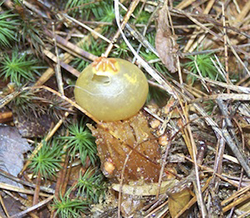
What is it?
We were in the forest Sunday and came across this on the trail, I have never seen one of these before. It was about 3" tall and the round head was about the size of a green grape.
R & C
Answer:
We have seen this fungus in the Forest, too. Our photo comes from South Line Rd. I have never bothered to ID this thing, guessing only that it belongs to Gasteromycetes, but today I tried. It seems to be Calostoma cinnabarina.
I have not checked if any common name exists. The book says it is mostly distributed in the Southeast, though reaches north to New England. Perhaps you already looked it up the common name on the web--I did too. It is called 'stalked puffball-in-aspic'. —Irina
Is It Native? Yes!
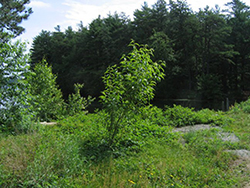

What is it?
Take a look at the little peach tree now growing right near the headquarters, at the Easthead Reservoir Dam! I was so amazed seeing it there all of a sudden and wondered why I had never noticed it before! —Irina
Is It Native? No
(but it's very good to eat —Sharl).
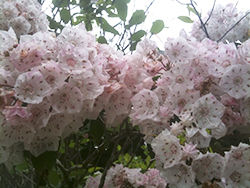
What is it?
Know Myles? This Sunday - guess where . . . . It's Mountain Laurel. Or is it Pine Barren Laurel ?
:- ))
Peter
Answer:
That's mountain laurel, (Kalmia latifolia). I believe it beats any non-native rhododendron. —Irina
Is It Native? Yes!
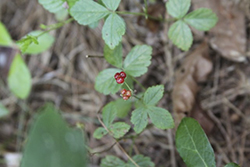
What is it?
Julie O.
Answer:
The very first and the 4th photos seem to be the same: dewberry (Rubus hispidus). Dewberry is a relative of blackberries and raspberries--they are all Rubus. It is a bristly creeping plant (indeed 'hispidus' means 'bristly') and rather tasty berries. They are turning from red to black now (end of July) and becoming juicy and yummy. Dewberry is very common in our forest. It is different from blackberries and raspberries in many ways, but the most curious difference is that it is evergreen, and thus you can spot it with leaves during the winter. The leaves turn bronze with the frost. — Irina
Is It Native? Yes!

What is it?
Julie O.
Answer:
Your photos 2 and 3, as you said, are blueberries. This is hillside blueberry (Vaccinium pallidum), and we have two others: one is highbush, the other is lowbush blueberry, which is lower than the one you photographed, and with narrower leaves. —Irina
Is It Native? Yes!
What is it?
Julie O.
Answer:
That's a rather beaten Indian hemp or white dogbane(Apocymum cannabinum). We have two dogbanes around here: one with white, the other with pink flowers. —Irina
Is It Native? Yes!
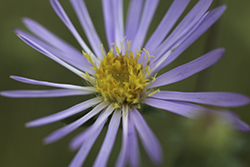
What is it?
Julie O.
Answer:
New York aster (Symphyotrichum novi-belgii). Asters have started to bloom (August 1), which means the summer is coming to its end . . .. —Irina
Is It Native? Yes!
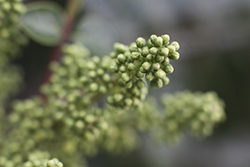
What is it?
Jullie O.
Answer:
Flower buds of something, perhaps meadowsweet (Spiraea alba); most likely, if it was growing at a low, wet spot. —Irina
Is It Native? Yes!
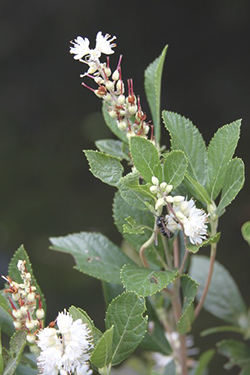
What is it?
Julie O.
Answer:
Sweet pepper-bush (Clethra alnifolia). This is probably the commonest wetland shrub in eastern MA, and it is funny that it becomes rather rare in the western part of the state (usually it is the opposite: they enjoy all kinds of plants that we don't have here). It is completely missing from the Mt. Holyoke Range, and they are growing it there in the bed near the reservation headquarters, like a rarity! It flowers at the start of August and fills the air with its strong honey scent. On the second photo you captured the starting fruits below the flowers. They are going to become brown and dry and last all the way through the winter and into the next summer, making this shrub easy to spot. —Irina
Is It Native? Yes!
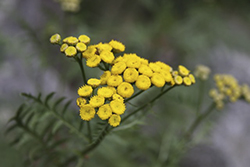
What is it?
Julie O.
Answer:
Tansy or golden buttons (Tanacetum vulgare). This is a non-native (European) plant, but it is not terribly offensive. A good, pleasant plant. —Irina
Is It Native? No
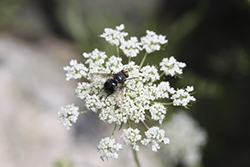
What is it?
Julie O.
Answer:
You already named it: it's queen Ann's lace (Daucus carota). Did you know that this is actually wild carrots, the very same species whose cultivated varieties are sold in the supermarket? This is also an introduced plant. —Irina
Is It Native? No
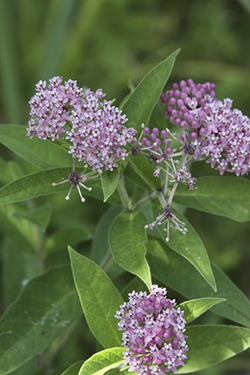
What is it?
Julie O.
Answer:
Common milkweed (Asclepias syriaca). A nice native plant, which is still so common that it has been considered a weed. It is not less pretty or useful than other milkweeds, which have become more rare and thus are "noble" milkweeds.
Is It Native? Yes!
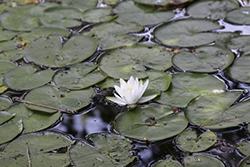
What is it?
Julie O.
Answer:
White water-lily. —Irina
Is It Native? Yes!
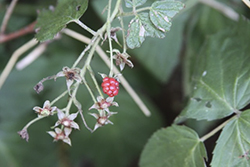
What is it?
Julie O.
Answer:
Common blackberry (Rubus allegheniensis) or brambles. If you want to name something that scratches your legs and tears your pants, it's "brambles," but if you talk about berries, it is "blackberry."You have captured an interesting character that helps tell blackberries from raspberries: in blackberries the fruit ("berry") separates together with the central core (called receptacle), leaving just a flat spot behind; while in raspberries the receptacle remains on the plant and sticks out after the fruit falls off. View separated raspberry here. Also, raspberries have round stems, while blackberries have angled stems, see this image at Salicicola.com. —Irina
Is it Native? Yes!
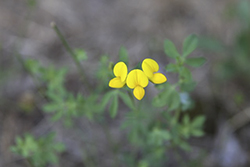
What is it?
Julie O.
Answer:
That's birdsfoot trefoil (Lotus corniculatus). Look, each of its leaves indeed looks like a bird's foot! This legume has been introduced from Europe in meadow sowing mixes. —Irina
Is it Native? No.
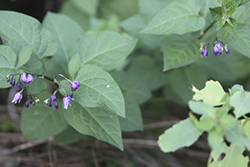
What is it?
Julie O.
Answer:
Bittersweet (Solanum dulcamara). When you notice this plant again, don't hesitate to uproot it! This is a troublesome alien (European) herbaceous vine. Its purple flowers look like potato flowers. No wonder! Both potatoes and this weed belong to Solanum. Upon flowering, each flower produces a red fruit, like this one at Salicicola.com. —Irina
Is it Native? No. It's an invasive plant!
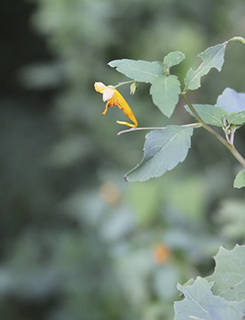
What is it?
Julie O.
Answer:
Touch-me-not or orange jewelweed (Impatiens capensis). It was given its Latin epithet "capensis" due to a mistake: the author of the name, a European botanist, thought it was originating from South Africa's Cape of Good Hope; meanwhile it is a native of North America. However the rules of botanical nomenclature require retaining the original published name, whatever inappropriate or even misspelled it may be. So there are quite a few ridiculous Latin names, each telling its own funny story.
If touch-me-not grows nice and bushy, like this one at Salicicola.com it indicates there is no over-grazing by deer, because its juicy foliage and stems are one of deer favorites. —Irina
Is it Native? Yes!
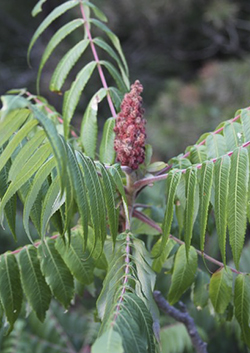
What is it?
Julie O.
Answer:
Smooth sumac (Rhus glabra). A beautiful native shrub that successfully grows in the harshest situations: dry, poor, sandy soil. In Massachusetts we have three different non-poisonous sumacs, which can be seen at Salicicola.com:
staghorn
smooth
and winged , which is called so because the axis of its leaf is winged.Actually only winged sumac is on our Myles Standish Checklist at Salicicola.com. So if this photo was taken in the MSSF, this means a new record for the Checklist! Can you tell us where this sumac was growing?
— Sorry, Irina, this was a backyard shot. —Julie
Also, two different species of sumacs, Rhus glabra and Rhus typhina, for a reason unknown to me, sometimes like to grow side by side. So if you look at sumac thickets closely, you may discover that some branches are completely smooth, while others are densely hairy. From the distance they look the same; you don't even notice the difference. —Irina
Is it Native? Yes!
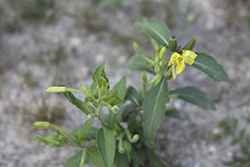
What is it?
Julie O.
Answer:
This shows a cut-back plant, evening primrose (Oenothera biennis) on salicicola.com. —Irina
Is it Native? Yes!
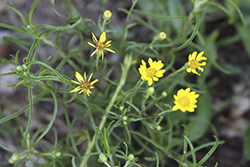
What is it?
Julie O.
Answer:
Sickle-leaved golden aster (Pityopsis falcata)--one of my favorite plants in the Forest. I grew it from seed for our East Entrance Native Plant Garden, where you can see it flowering right now (August 1). View more pictures of this plant at Salicicola.com. —Irina
Is it Native? Yes!
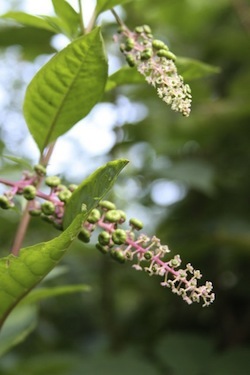
What is it?
Julie O.
Answer:
Pokeweed (Phytolacca americana). Was it this one at Salicicola.com, near the headquarters? For some reason, people despise this beautiful herbaceous plant that can reach 6 ft tall and more! Many are afraid of it as a poisonous plant, but as long as you don't munch on its stout root, this plant is not so poisonous. Birds take the berries. —Irina
Is it Native? Yes!
Your question here.
Irina's answer here.
